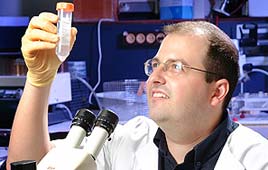Induced stem cell technology allows adult cells to be reprogrammed into stem cells similar to embryonic stem cells

Technion and Rambam Medical Center researchers succeeded for the first time in inducing the differentiation of induced stem cells into heart cells. This is reported by the prestigious scientific journal Circulation.
The stem cell revolution arouses great interest in the scientific community due to the potential inherent in them to repair damaged tissues and organs. A large number of works have shown the ability of human embryonic stem cells to undergo differentiation into a variety of tissues including heart cells. One of the obstacles on the way to clinical use of these stem cells is the immune problem, as they are expected to be rejected after transplantation. In the last two years, there has been a significant breakthrough in the field with the development of induced pluripotent stem cells (iPS) technology, which allows adult cells (taken from the skin) to be reprogrammed into a state of stem cells (iPS) similar to embryonic stem cells.
A group of researchers from the laboratory of Prof. Lior Gapstein from the Rappaport Faculty of Medicine at the Technion and the Rambam Medical Center succeeded in causing human induced stem cells to differentiate into heart cells. The resulting muscle cells showed molecular, structural, and functional properties of heart cells. Furthermore, the differentiation of the stem cells in the laboratory was not limited to the creation of single heart cells but led to the creation of beating heart tissue with spontaneous pacemaker activity and electrical propagation. Additional experiments showed the ability of the resulting tissue to be used as a unique model system for examining the effect of drugs on human heart tissue.
The results of the work may have significant implications for the developing fields of tissue engineering and regenerative medicine as well as personalized medicine: to create laboratory models of tissues that are unique to each patient for a better understanding of genetic disease mechanisms, to create personal models for the development and adjustment of drugs, And the future potential - to solve the problem of immune rejection by using cells for transplantation. However, the researchers emphasize that despite the great potential inherent in this technology, the road to clinical application is still long and there are many other obstacles that must be overcome.

8 תגובות
To me, it is likely that the telomeres in induced and embryonic stem cells will be similar, after all they have been converted from adult cells - with short telomeres to long ones.
All the recent developments actually show that restraint was allowed and the recommendations of the Ministry of Health and dieticians can be written down in the history books such as maintaining health in the primitive period with the thought that within 10-30 years a balm will already be found for all these troubling problems.
We are approaching eternal life
Addendum: Lest I get it wrong, I wish success for the overarching goal of the research, which is to cure terrible diseases
Many.
And on this it will be said A M A L H Paraphrasing the phrase "there is nothing" it is now possible to say "there is something".
Soon it will be possible to produce a human robot, like the one described in science fiction books, similar in every way to a human (without
wiring), just emotionless.
Wishing you much success.
Stunning!
Links links links
What about Link? reference? The reference to a professional article?
Thanks
What is the state of the telomeres in induced stem cells?
Are they more shortened than embryonic stem cells?